May and Mother’s Day Cards
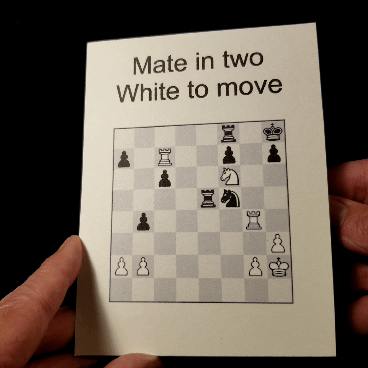
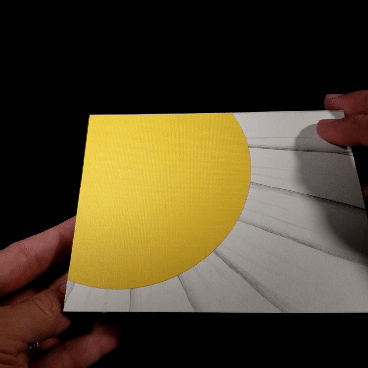
Idea
Mother’s Day is in May, so Mom gets a bonus card!
For the past few years, my challenge for the May cards has been to use the same mechanism in different ways. I determine the basic mechanism to use first, then come up with two ideas to fit that mechanism. Usually, I do it the other way around.
This year, I used a combination of a parallelogram and Vs in a 90° pop-up. I got the idea when looking through a 1961 Hansel and Gretel pop-up book, which used a similar mechanism throughout the book. Here’s the last page from it.
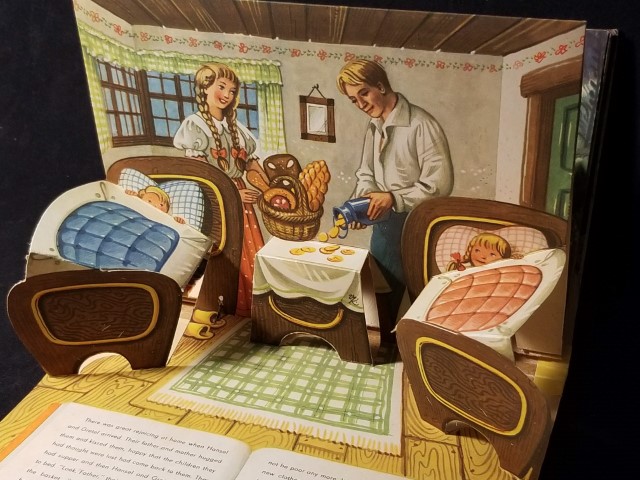 Hansel and Gretel from a 1961 pop-up
Hansel and Gretel from a 1961 pop-up
The table in the center is a parallelogram and the two beds are truncated V folds. It’s not too complicated, and in the book, there are no pasted-on pieces.
For the May card I wondered, what situation might be used in that mechanism where it is symmetrical and came up with chess players? The players would be on the Vs and the board would be on the parallelogram. I thought playing chess in a park would make a nice scene. When doing my first sketch using mice as players, I found a large empty area in front of the players, so I came up with multiple, progressively smaller chess games to fill the space. I changed it up and decided to use the man from the 2015 series of cards as the largest players, then the mischievous kittens from 2018, and then the mice.
As usual, for the past few years, I’ve used a floral theme for the Mother’s Day card.
Design
May Card-specific
The chess board was the trickiest part of this card. Like the table, the pieces are lifted with a parallelogram. I took a mate-in-two chess problem that didn’t have too many pieces, and cut slots for each piece on a printed chess board. One thing I forgot was that I intended for the white player to have a piece in hand, so there is an extra pawn in this game.
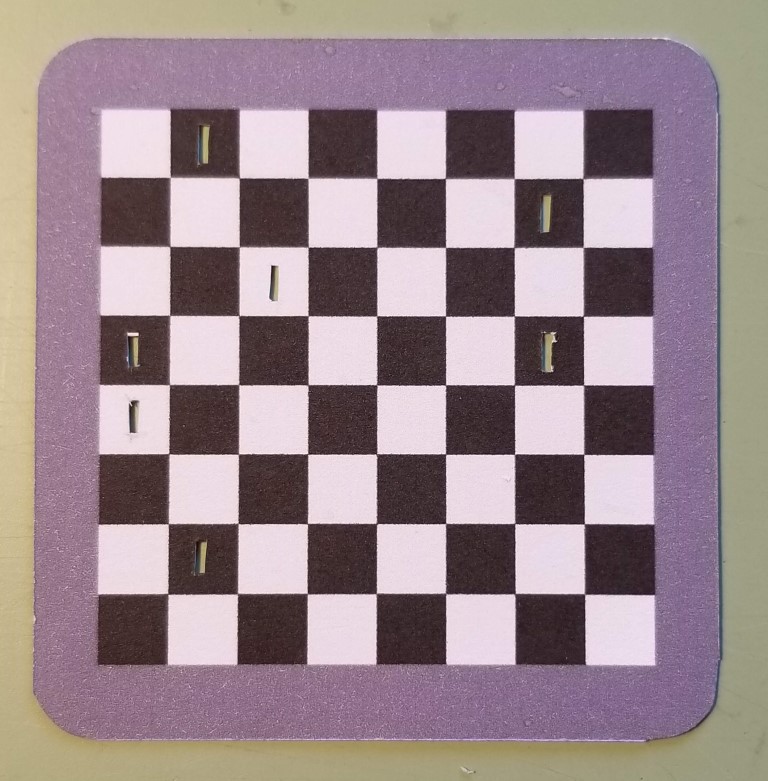 Board with slots for all the pieces
Board with slots for all the pieces
After cutting the slots, I had to cut holes in the table, which can be bigger than the slots since they’ll be hidden by the board.
 Holes in the table for the supports
Holes in the table for the supports
The piece that will lift all the pieces took a couple of tries. The final one is on the left below. Although not clear in the photo, the supports for the pieces closer to the back are longer which avoids getting all seven of them through the base at once. I could do the longest one, then move to the next shorter one, and so on. The far right photo shows all the supports before trimming them to their final length.
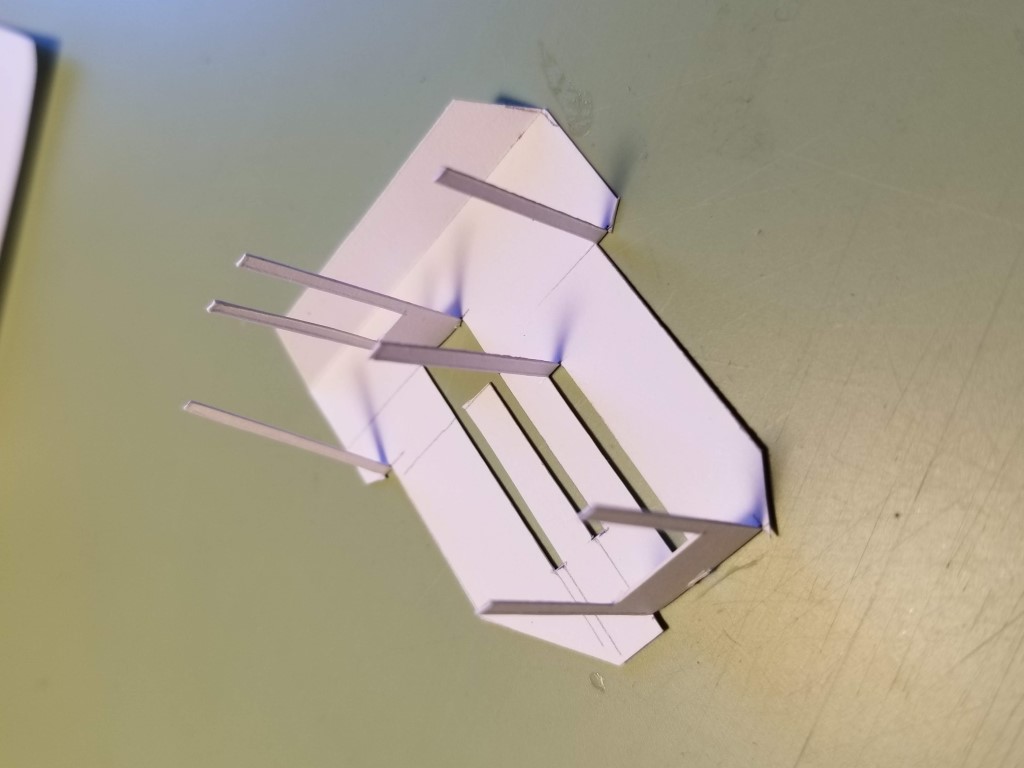
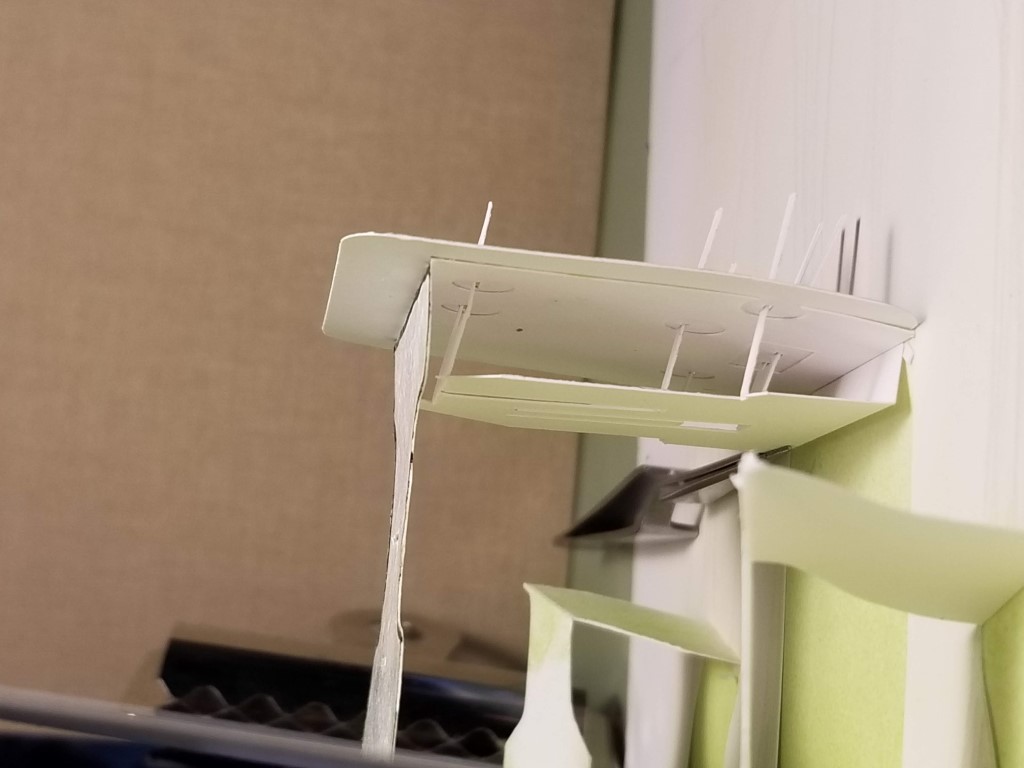
 Assembling the chess board
Assembling the chess board
Here’s a photo of the completed chess board in which you can see the supports under the pieces. As the card closes, the pieces lean forward and flat. (Since I attached the pieces while the board was on its side, a couple of the pieces are swapped, which everyone will notice as they try to solve the problem.)
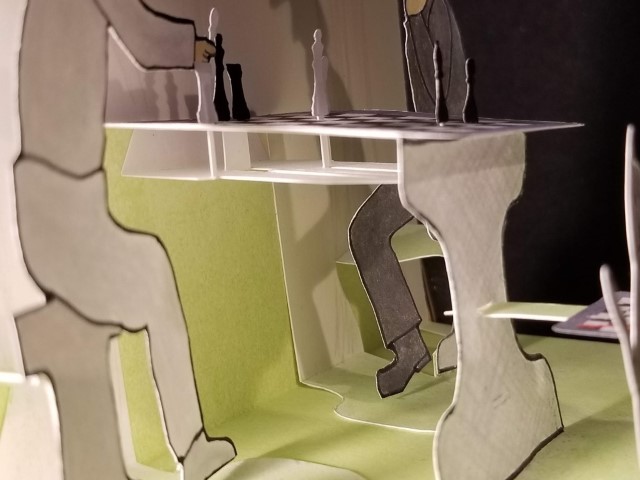 Assembling the chess board
Assembling the chess board
The kitten and mice games are with a parallelogram attached to the table leg of the larger game, which also is the support for the board. Since one of the kittens is a naughty kitten, their board is in two pieces, on either side of the chess pieces being tossed around.
For the mice’s flat, printed board, I used a representation of the chess set as appears in print. It, too, is a mate-in-two chess problem, making the card have three: the cover, the largest game, and the smallest game.
Mother’s Day Card-specific
The Mother’s Day card is simpler since it does not have the extra games. The daises were designed on the computer using photos of my grandfather’s daisies as the model. I had the Silhouette Cameo cut the pieces, which were cut from three different papers. The white is index paper (light cardstock), the yellow is textured cardstock, and the green is cardstock. After getting them cut out, they really needed debossing to add the texture of the petals and leaves.
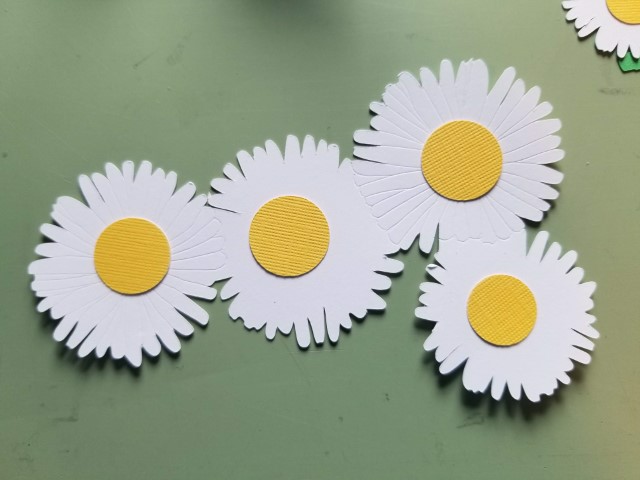 Debossing really adds detail
Debossing really adds detail
There are four sets of daisies, one on the base of the card. One on the parallelogram (like the table above). Finally, a set where each player sat. In this card, the flower opens and extends outside the card as it opens, which is one of the reasons I used this model. For the May card, the design didn’t lend itself to having the players extend outside the card.
The #1 rule of pop-ups is to make sure the mechanism doesn’t extend outside the card when it is closed, which I was careful to follow. The #2 rule is to make sure the mechanism doesn’t collide or catch on itself. That is where I failed. Of course, the sketch worked fine, but it didn’t have all the petals and openings in the leaves for things to catch upon.
I knew the right daisy may catch on the left as it closed, so I designed the leaves on the left with a flat area for it to slide. But, I didn’t realize that the left daisy would catch on the daisies on the parallelogram. To fix all that, I ended up taking off flowers on both sides and redoing them to avoid catching.
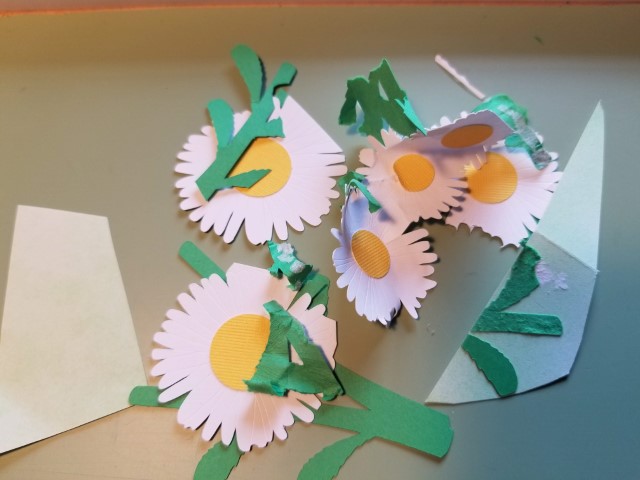 Oops!
Oops!
The repair worked well, and the final card opens and closes smoothly.
Covers

The May cover is a printed chess problem.

The Mother’s Day cover is a close-up of a daisy (not the sun). The yellow is textured card stock, and the petals are penciled in.
Build
- 9” x 6”
- The May covers are heavy cardstock paper, and the interiors and most of the mechanisms are index paper. The smaller pieces are copy paper.
- The chess pieces, and flowers were cut with the Silhouette Cameo, all the rest by hand.
- The centers of the daisies are textured cardstock.